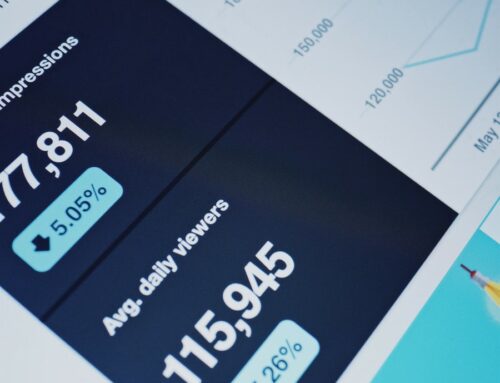If you are new to using Google Analytics, you might be unfamiliar with some of the terminology and have difficulty deciphering what the results mean. We’ve created a cheat sheet to help you interpret and analyze the numbers.
The Number One Biggest SEO Mistake to Avoid
Traffic Source
To view and compare traffic sources on your website, select Acquisition > All Traffic > Channels from the left side navigation on your screen
In the upper right hand corner of your screen, select a date range. You can also use the “Compare To” feature to compare recent results to past results. By selecting “Previous Period,” you’ll get the same number of days prior to your selected date range, or you can choose to compare to the same date range from the previous year. Click Apply once you have the dates you wish to view.
In the upper right hand corner of your screen, select a date range. You can also use the “Compare To” feature to compare recent results to past results. By selecting “Previous Period,” you’ll get the same number of days prior to your selected date range, or you can choose to compare to the same date range from the previous year. Click Apply once you have the dates you wish to view.
Direct Traffic: Direct Traffic refers to people who visit your website directly, by typing in your URL in the web address bar. For many companies, Direct and Organic Traffic are leading sources of web visits
Organic Traffic: Organic Traffic comes from web visitors who are searching Google for products, services, or information similar to what you offer on your website. This type of traffic comes from the search engines, and if you are working with a digital marketing agency such as Organically for SEO services, this is the type of traffic you’ll likely go over in your reports.
Paid Search: Paid Search traffic comes from Pay Per Click campaigns such as Google AdWords. Paid Search is an excellent way to show up higher in results through a search engine for terms related to your business. Unlike Organic Traffic which takes time to grow, Paid Search offers an instant return. Given that 75% of clicks go to first page search results, if your business isn’t on there, you are missing out on a large number of potential customers or web visitors.
Social: Social Traffic comes from the various social media channels, such as Facebook, Instagram, or Twitter, LinkedIn, etc. Social media is an incredibly important piece of your digital marketing efforts, given that 81% of the U.S. population has at least one social media account. To learn more about the importance of social media, see: Is Social Media as Addictive as Sugar?
Email: Email traffic is just like it sounds. If you manage email marketing campaigns for your business, you can set up your Analytics to measure traffic that comes from clicks within your emails.
Why You Need at Least 8 Blogs Per Month To Drive Serious Traffic to Your Site
*To view your top traffic sources in graph form, simply click the graph icon at the top right of your screen, just above the source options. From here, you can select if you want to view the top source of sessions, revenue, goal completions, etc.
What the Terms Mean
Sessions: A session refers to any time a user has accessed a page on your website. The number of sessions each month will convey how many times users have accessed your website. Generally speaking it is not unusual to see a dip in traffic here and there during the life of the campaign, however, we tend to see these numbers increase overall.
% of New Sessions: This is an estimate of the percentage of first time sessions.
Average Session Duration: This number refers to the amount of time a user spends on your site per session. This data is an indication of the quality of traffic on your site. You want to see this number grow over time to indicate that people are finding your site due to high quality keywords and are spending more time looking at your services or products.
Pages Per Session: This number indicated the number of pages a user viewed during a session. Pages Per Session is another “quality traffic” indicator as described above, although more page views does not necessarily increase the amount time a user spends on the site.
Bounce Rate: Bounce rate refers to people who clicked on the site and left quickly. We want this number to be as low as possible, however, it is typical for the bounce rate to fluctuate month to month. This is an important piece of data to track in relation to other numbers. For example, if sessions are down for one month, but the bounce rate also dropped and the average session duration increased, these are still good results because it indicates the quality of traffic improved during the time period tracked.
Transactions: Transactions refer to the number of completed purchases on a site.
E-commerce Conversion Rate: This is the percentage of sessions that resulted in an e-commerce transaction
Revenue: We track revenue generated from Organic traffic as one of our methods of determining the success of the campaign. During our onboarding call, we typically get an idea of the “busy” times for your business to determine peak transaction periods so we can track normal dips in online earnings. If the revenue increases it can be an indicator of quality traffic, and a result of more people finding your website through our SEO campaign.
New Users: New users indicates the number of first-time users on the site during the selected date range.
% New Sessions: The percentage of new sessions refers to the percentage of total users that visited your website for the first time.
Goals: With goals, you can outline target objectives or actions completed on your website. Over time, this metric will measure how successfully your website fulfills your conversion goals or objectives.
Understanding Your Website’s Bounce Rate: What’s Normal and When to Worry
How to View Visits to Specific Pages
To determine the most popular pages on your website, or to track visitors to a certain page in particular, select Behavior > Site Content > All Pages.
Why Meta Descriptions Still Matter for Search Engine Success
Want to Learn More?
To learn more about measuring digital marketing efforts in Analytics, or to find out how the best digital marketing agencies drive traffic to your website, contact the helpful staff at Organically for a complimentary website analysis!
Or select from the links below:
What services does Organically offer?
What results can I expect working with Organically?
Follow our blogs for marketing tips and advice from Google Certified Experts.
Is Instagram the New Facebook for Businesses?
Is Your Website Speed Killing Your Business?
The Top Mistakes You Can Make with a New Website or a Site Redesign
How and Why You Should Optimize Your Blog for Long Tail Keywords









 CERTIFIED EXPERT
CERTIFIED EXPERT